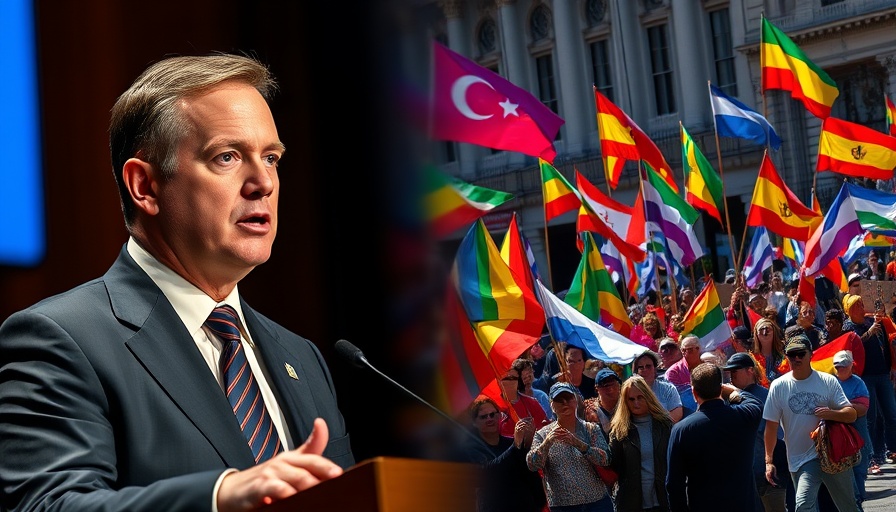
Revisiting Pulse Nightclub's Memory: What It Means for Community Healing
The recent comments by Florida Governor Ron DeSantis regarding the removal of artistic tributes at the Pulse Nightclub site have stirred both reassurance and anger in many communities. The Pulse Nightclub, a site forever marked by tragedy, lost 49 lives in a mass shooting in 2016, making it a significant symbol of resilience and remembrance for many Americans. With DeSantis deeming the street art as having 'gotten out of hand,' the underlying tensions surrounding public memorials and state policies have come to the fore.
In Ron DeSantis Stands Firm On Painting Over Pulse Nightclub Memorial, the discussion dives into critical issues surrounding safety and memorialization, prompting us to analyze the larger implications for communities.
Understanding the Policy Shift: A Statewide Approach
In order to comprehend the implications of DeSantis's stance on Pulse's memorialization, it's crucial to recognize that his administration recently passed a law banning street art across Florida. This directive aims to standardize crosswalks and streets' intended purposes while addressing safety concerns. Nevertheless, critics argue that this broad application undermines the memory of those lost and the importance of street art in local expressions of grief.
Art or Safety? The Battle Over Public Expression
The dichotomy between artistic expression and public safety emerges clearly in this debate. Proponents of street art maintain that these installations serve as powerful reminders of lost lives and create communal spaces for healing. On the other hand, lawmakers, including DeSantis, assert that distractions or alterations to infrastructure can lead to safety hazards, particularly in high-traffic areas.
Historical Context of Memorialization in Public Spaces
Across the United States, how communities memorialize their tragedies has always been a contentious issue. The Pulse massacre, like many other national tragedies, demands ongoing conversation about responsible remembrance. Whether through art, memorials, or public discourse, these representations play a role in shaping collective memory—a process that is crucial for healing.
The Emotional Impact: A Concerned Community Speaks Out
Community members and LGBTQ+ advocates have expressed their disappointment and anger regarding DeSantis’s remarks, emphasizing the emotional significance of the street art at the Pulse site. For many, these murals were not merely decorations but rather expressions of love, loss, and communal strength that symbolized a unified response to hate—not just at the Pulse location, but across the nation.
A Call to Action: Rebuilding Community Trust
In light of this conversation, the importance of community involvement in funding and executing a sufficient memorial should not be overlooked. DeSantis’s criticisms of a lack of a 'fitting memorial' align with a call for constructive dialogue about how to invest in memories that genuinely honor the victims while balancing state interests. Only through thoughtful collaboration can Florida reconcile the need for safety with respect and remembrance.
Future Directions: Challenges Ahead for Public Art
As communities articulate their narratives, it may become increasingly challenging to defend artistic expression within public spaces. This debate reflects broader societal questions about public expression in America today. While the right to memorialize via art has historically been closely guarded, the emergence of stringent policies like those introduced in Florida could signal a changing landscape for future tributes.
Conclusion: Preserving Memories and Seeking Solutions
The conversation ignited by DeSantis's statements on the Pulse Nightclub memorial is emblematic of a larger struggle involving public art, safety, and community memory. As we reflect on these critical debates, it remains imperative that we honor the memories of the 49 lost lives while striving for solutions that foster both safety and meaningful commemoration.
 Add Element
Add Element  Add Row
Add Row 



Write A Comment